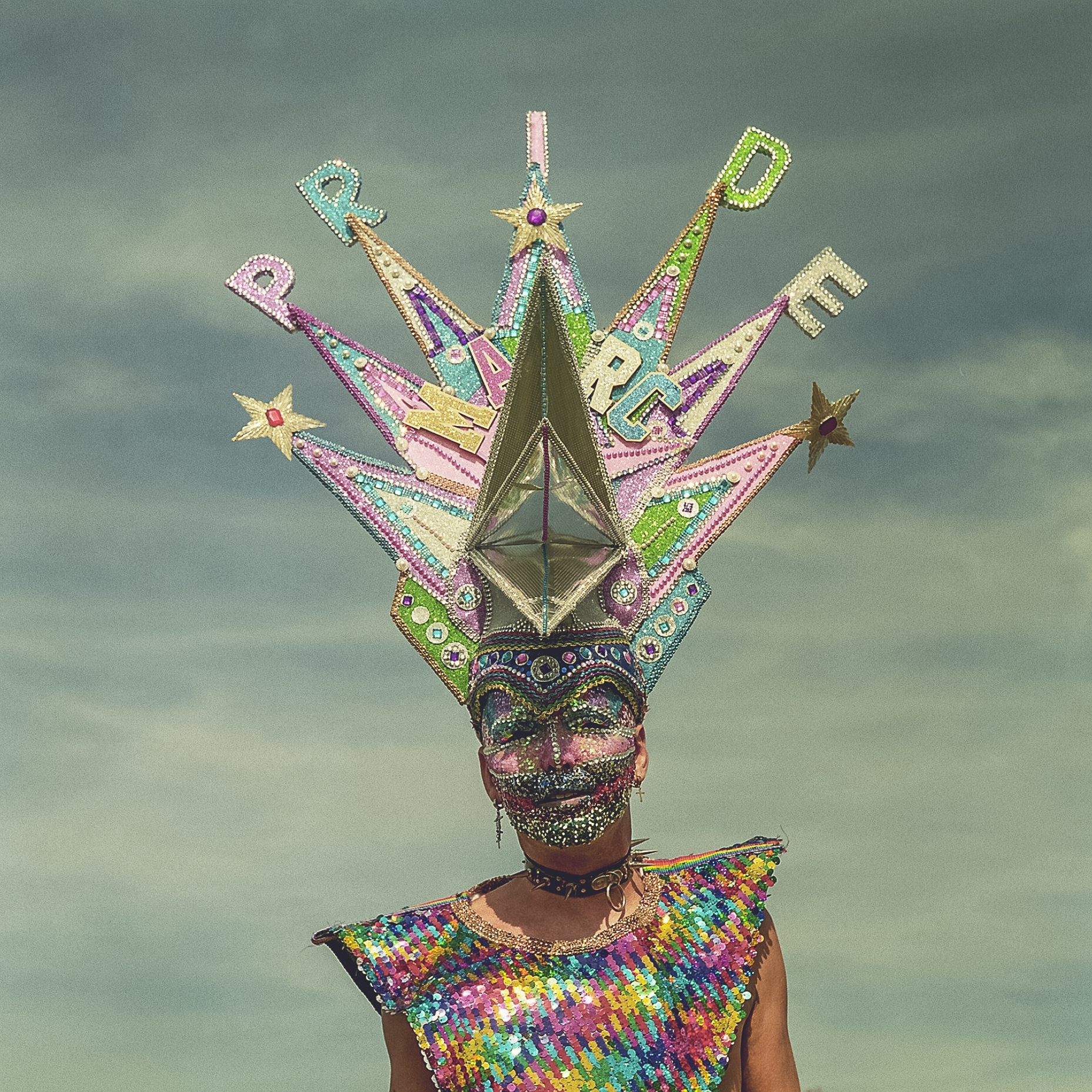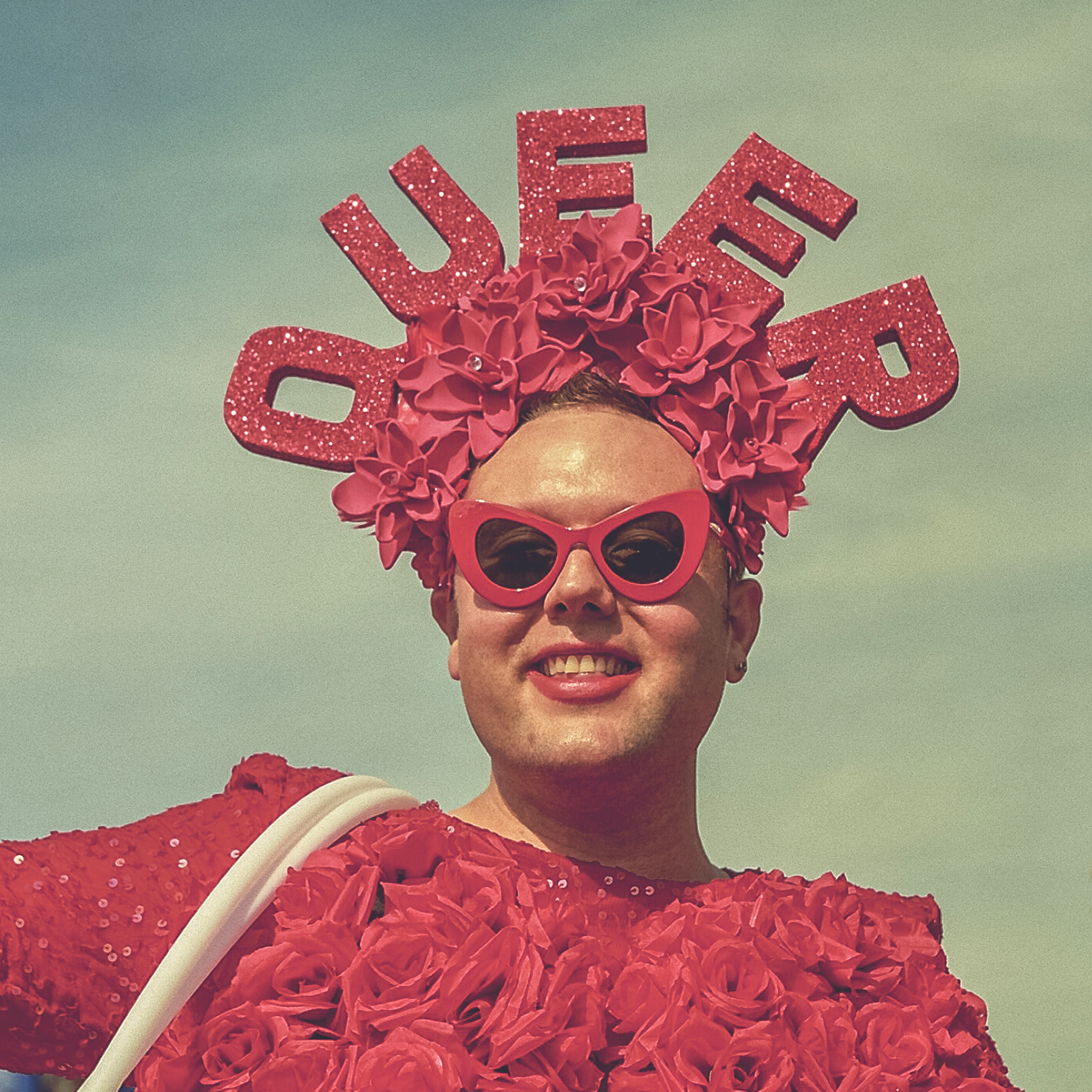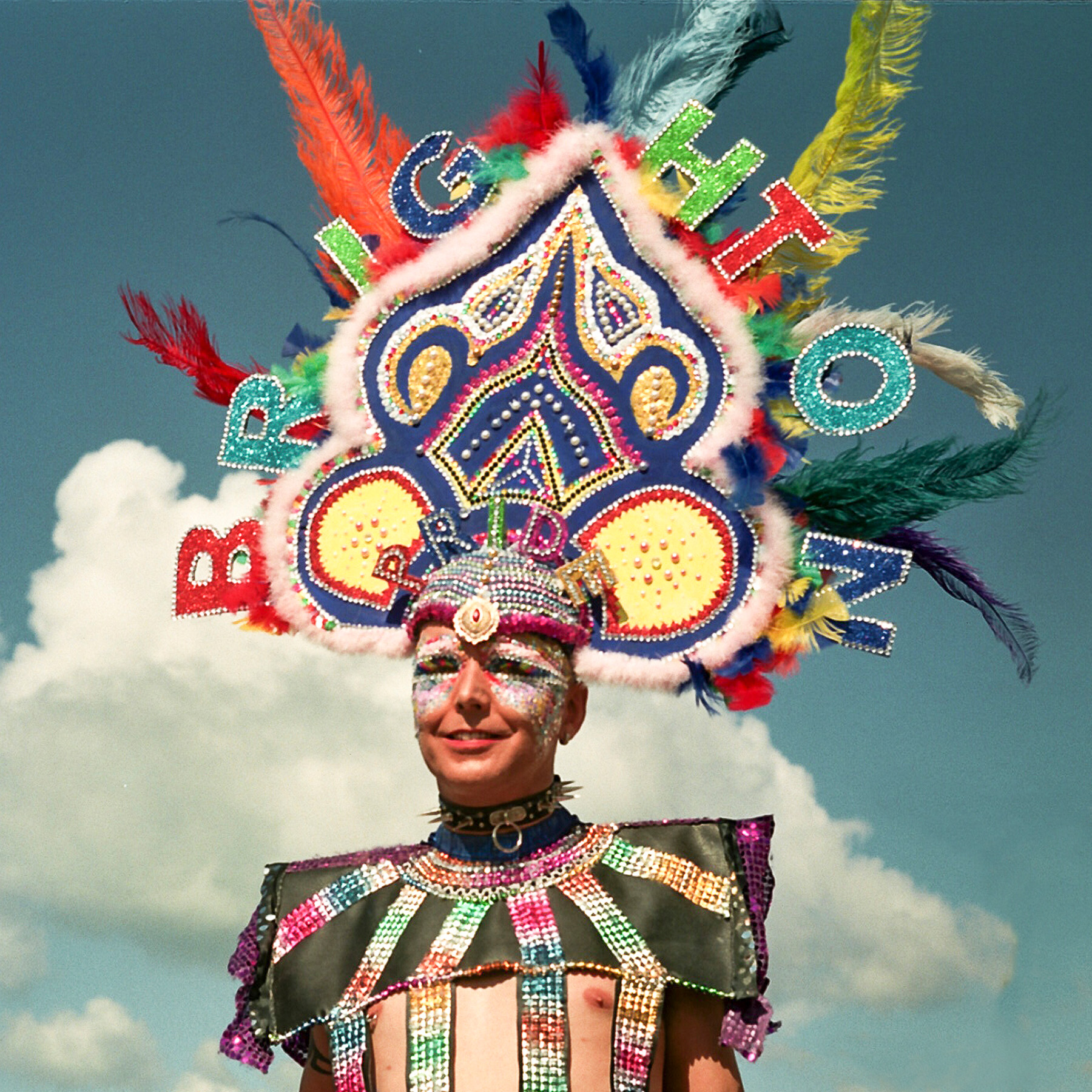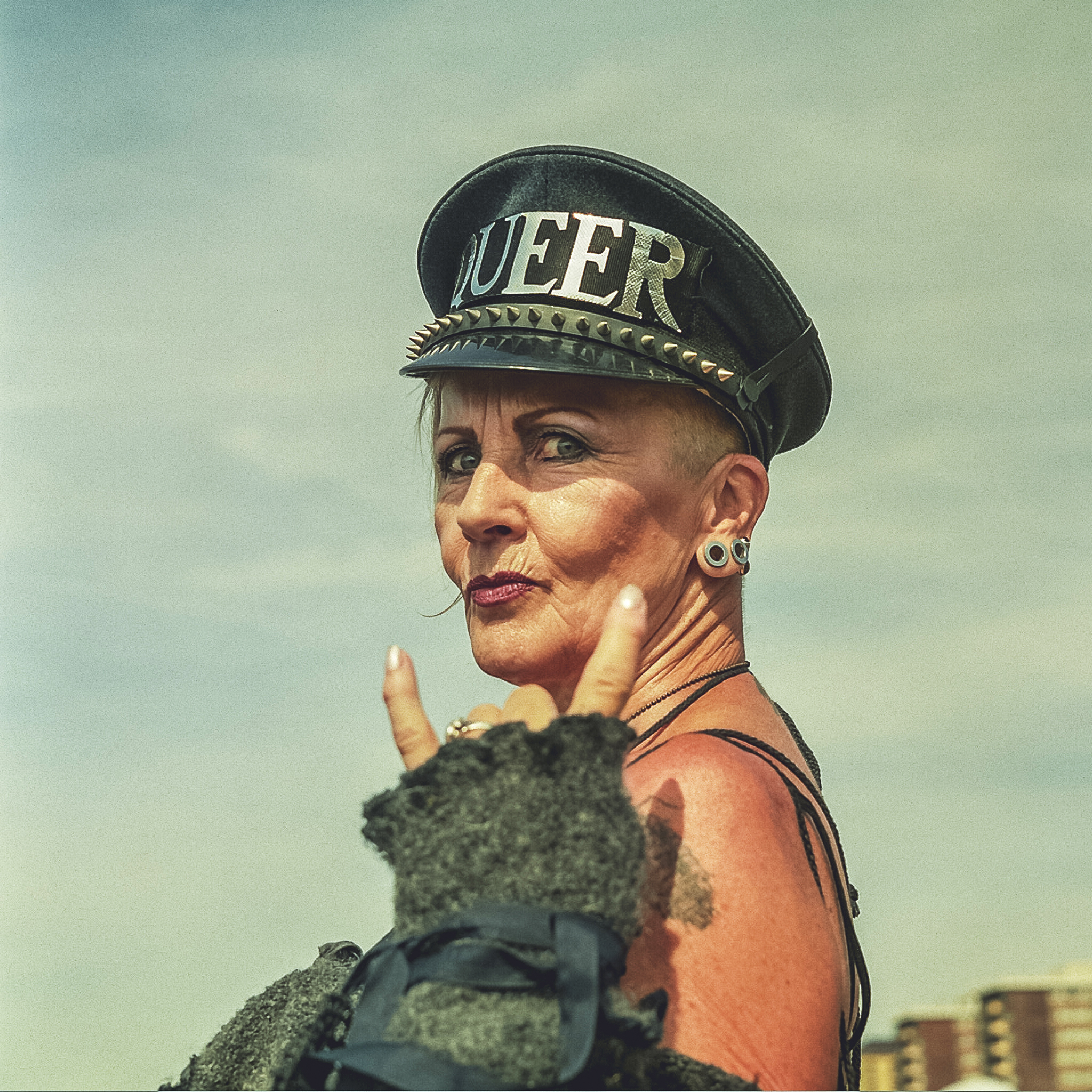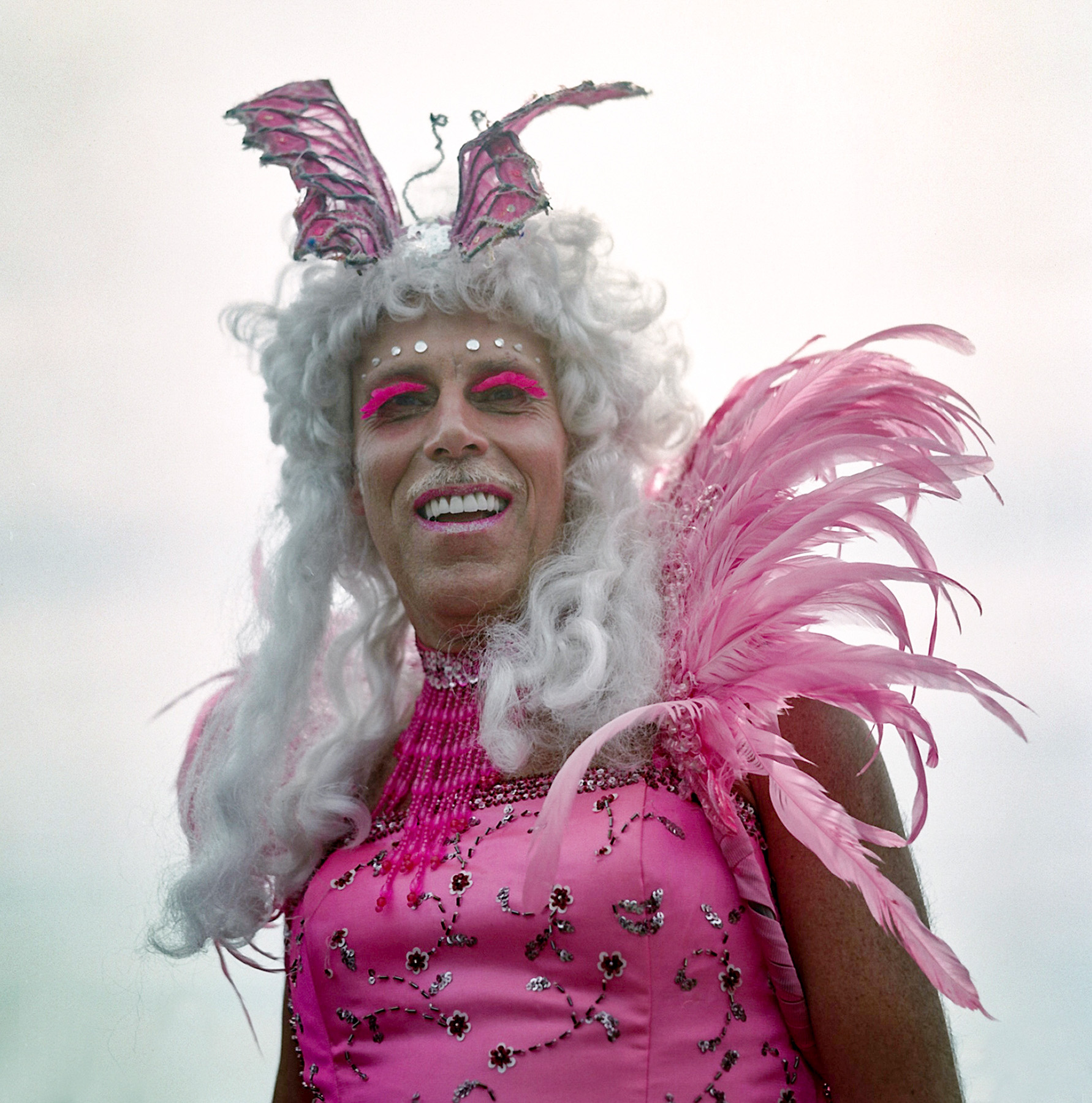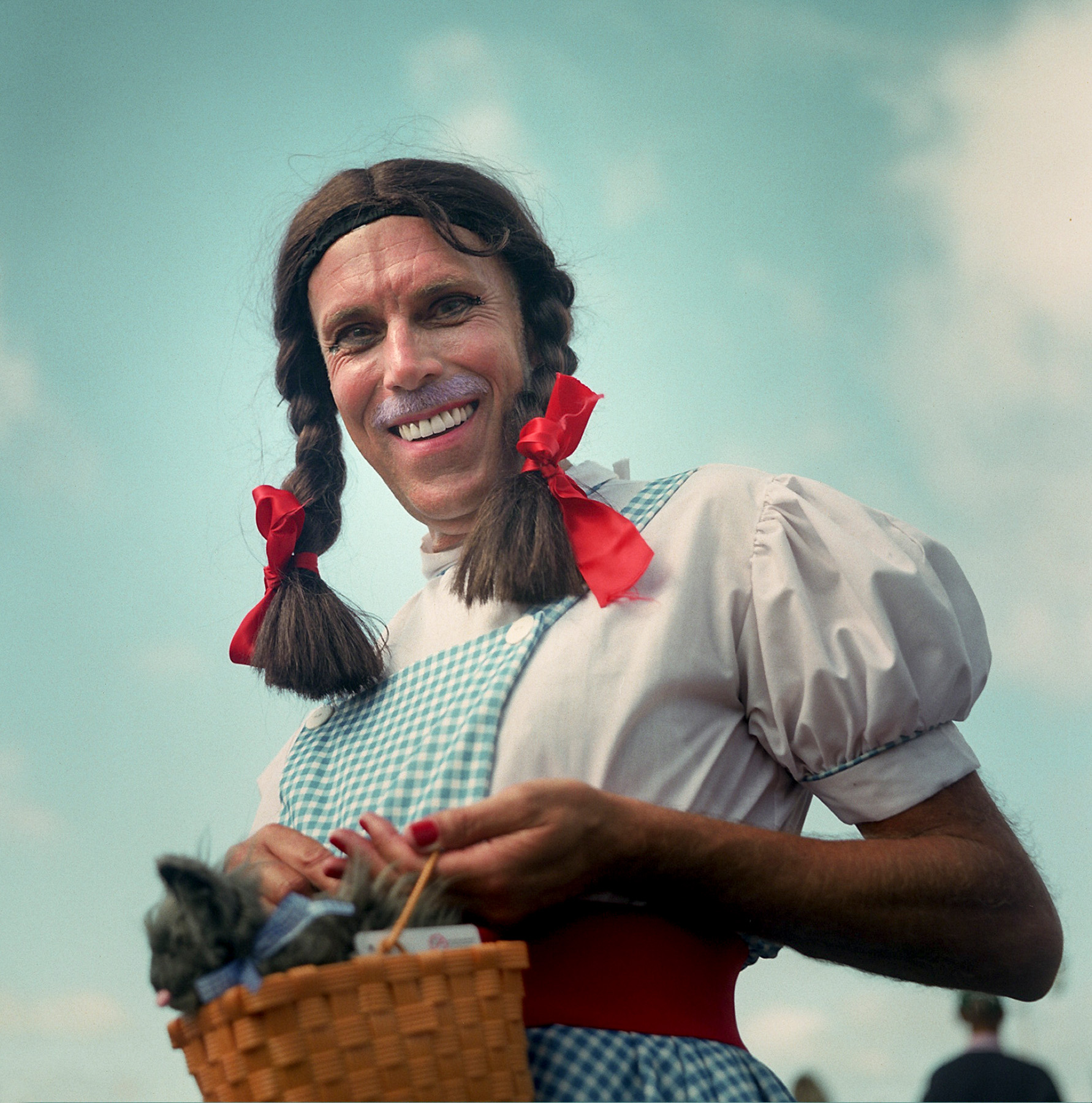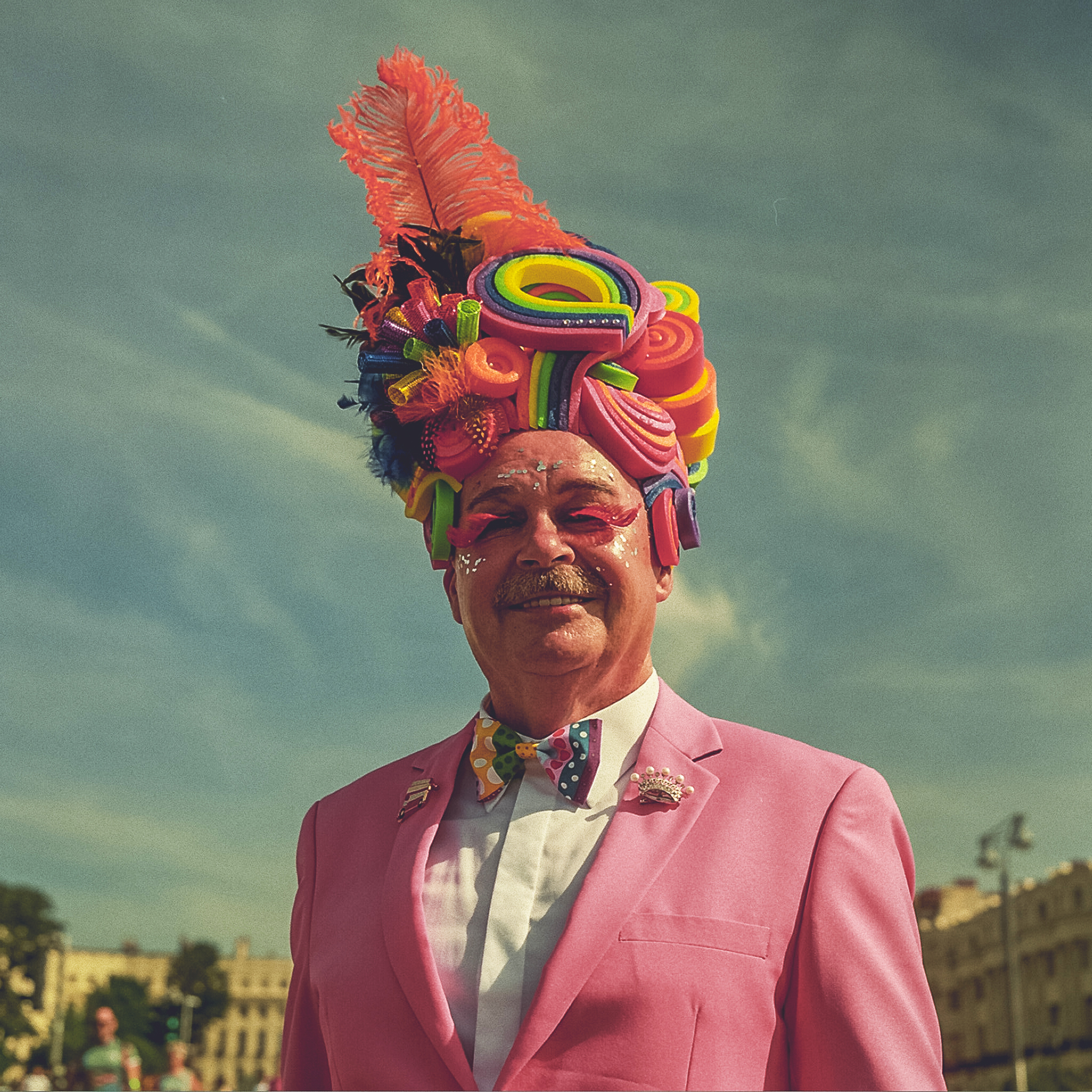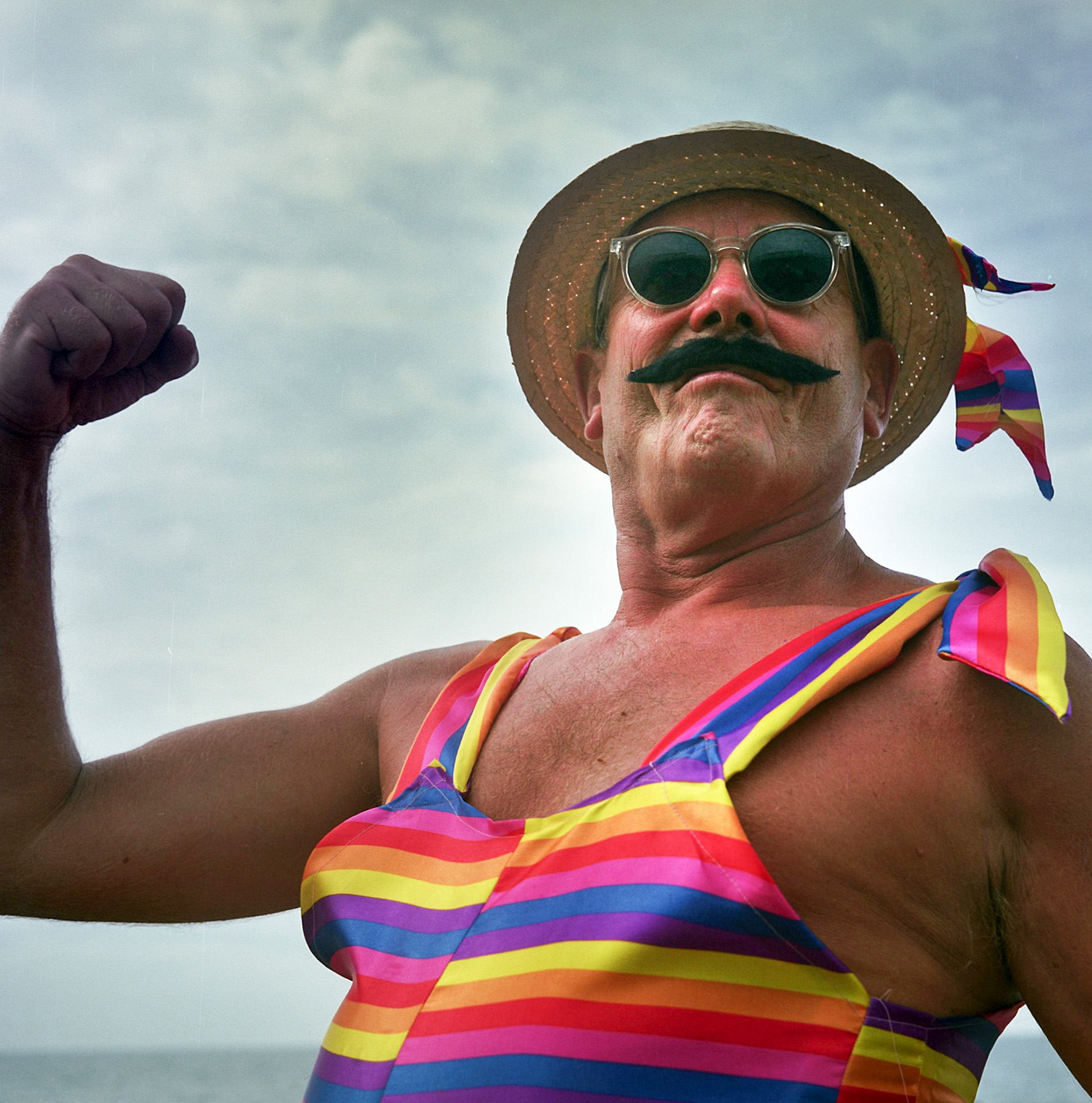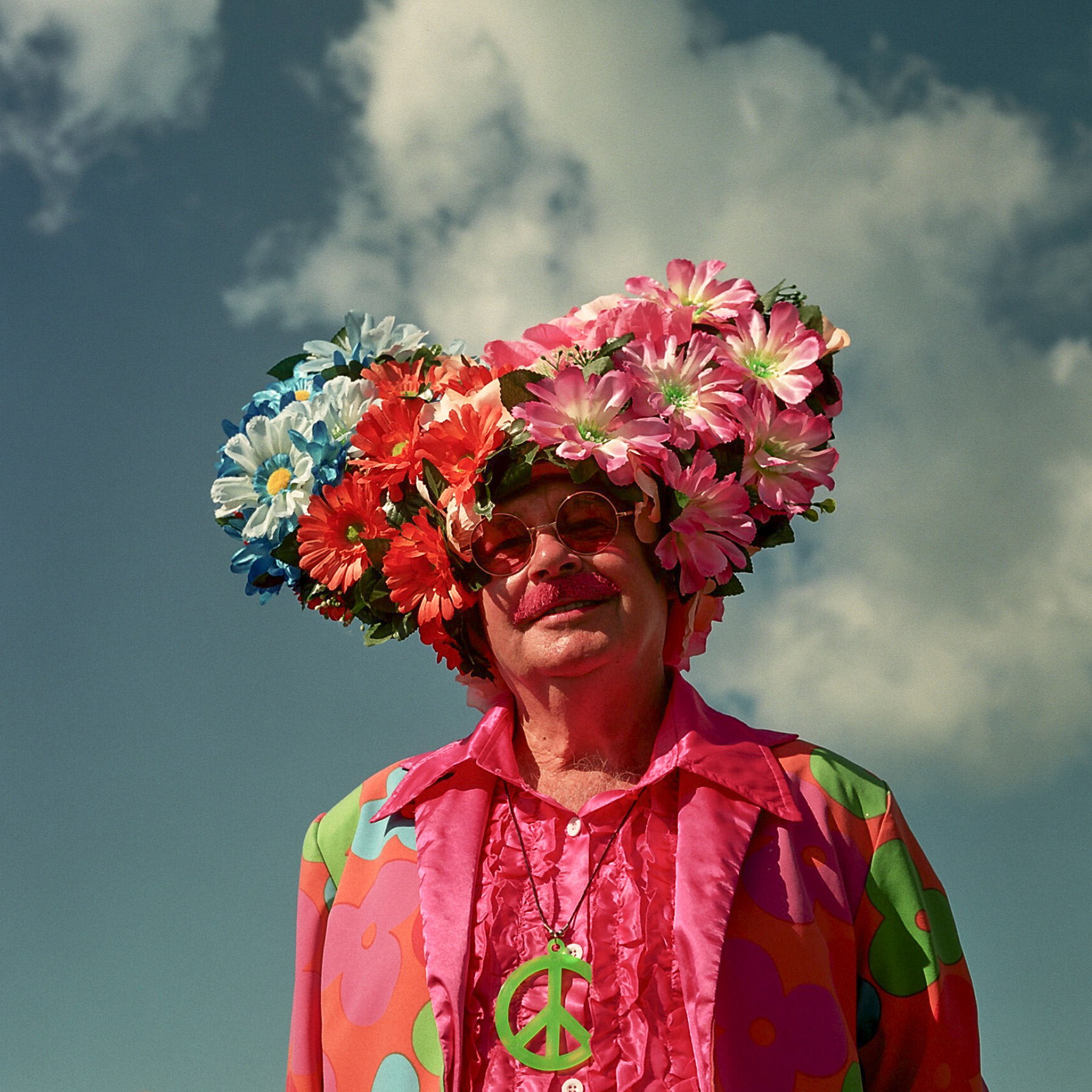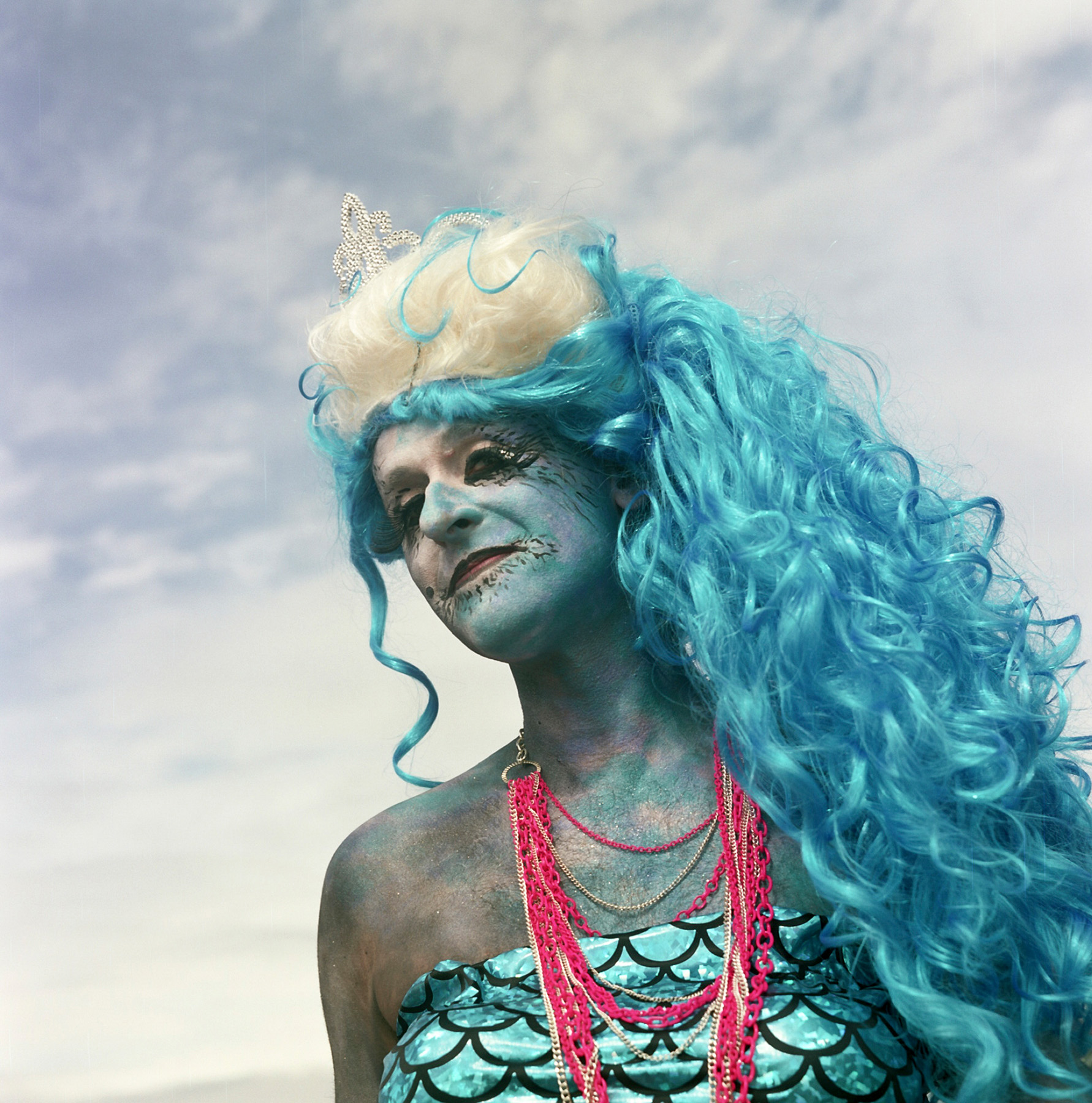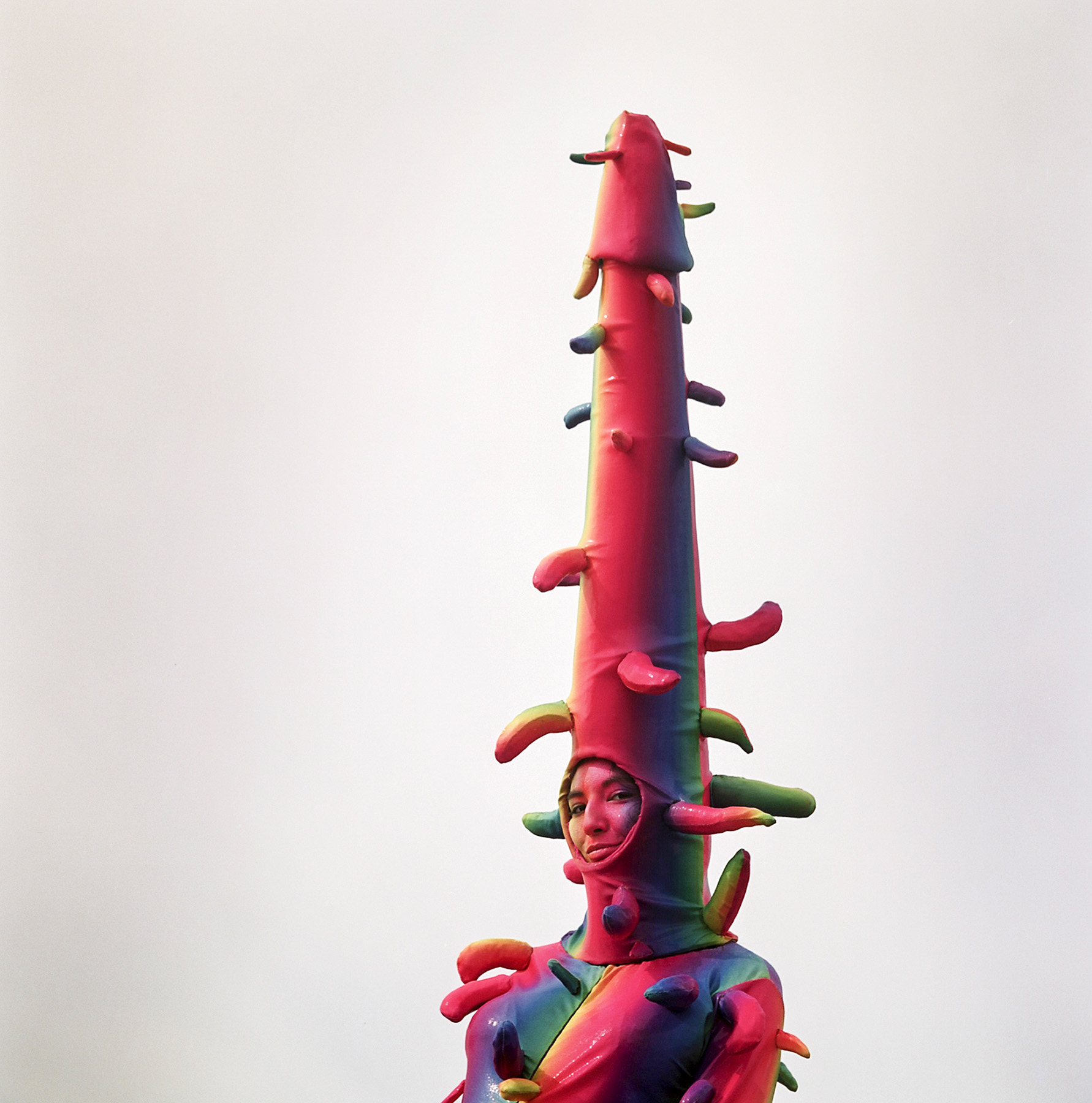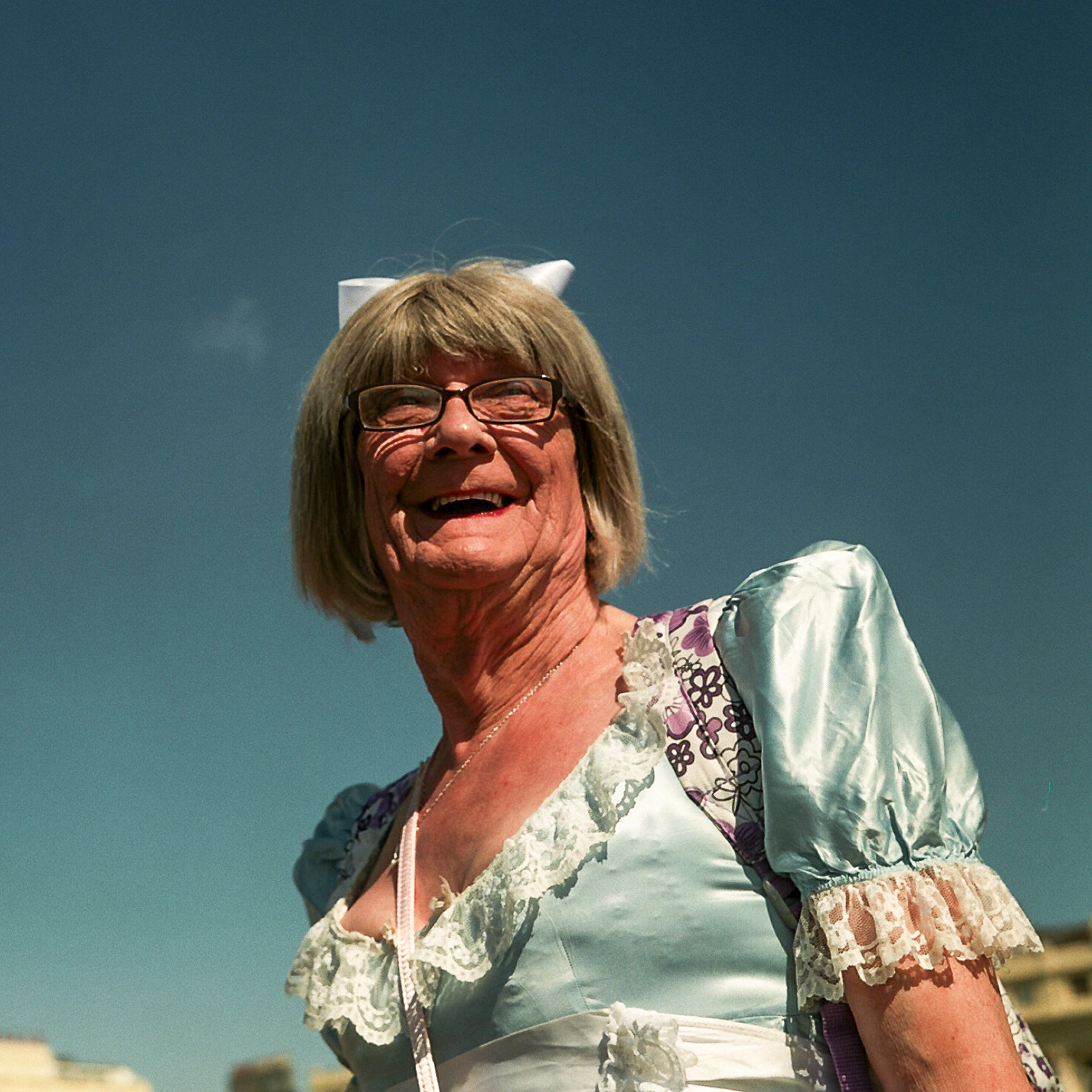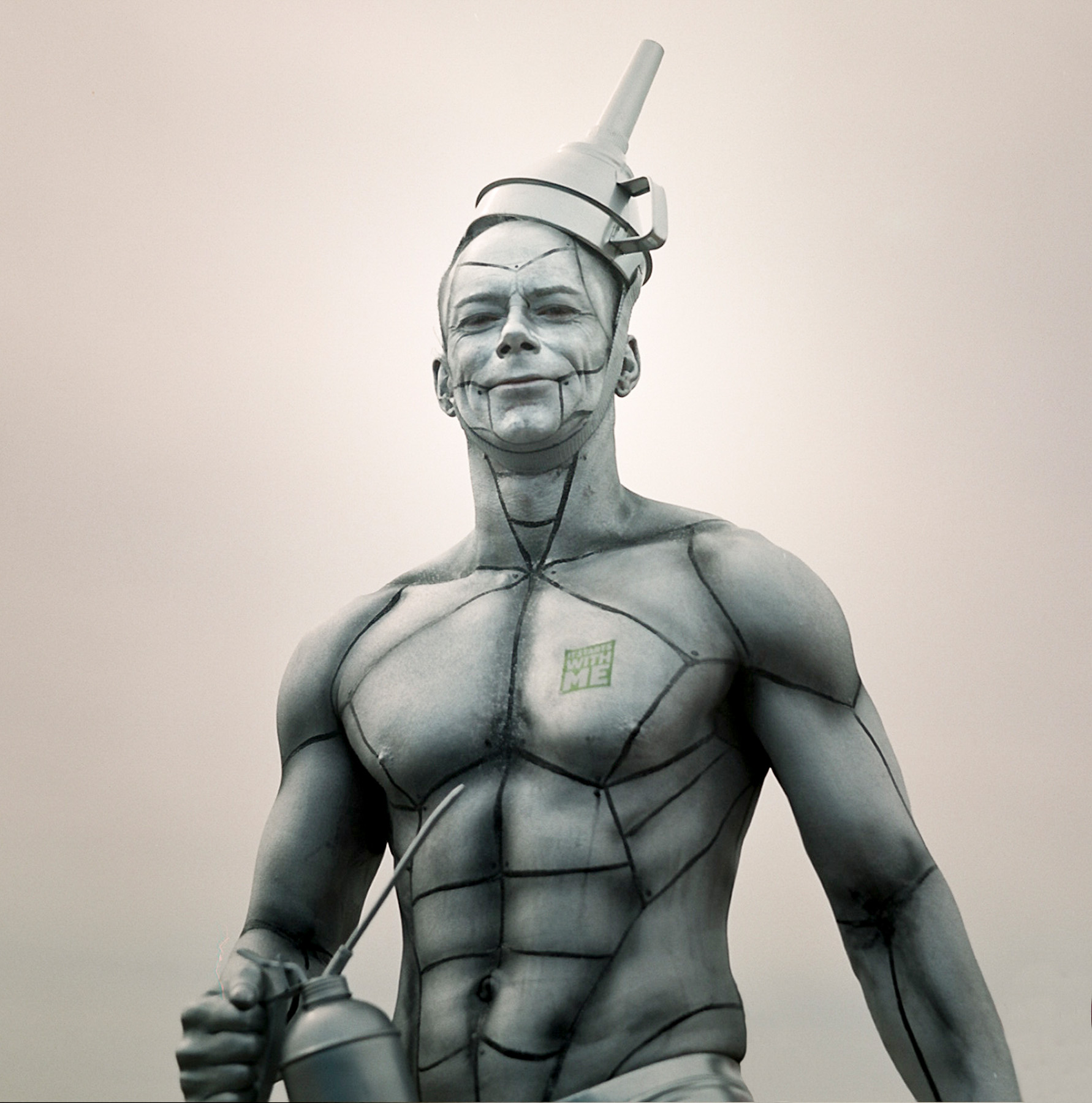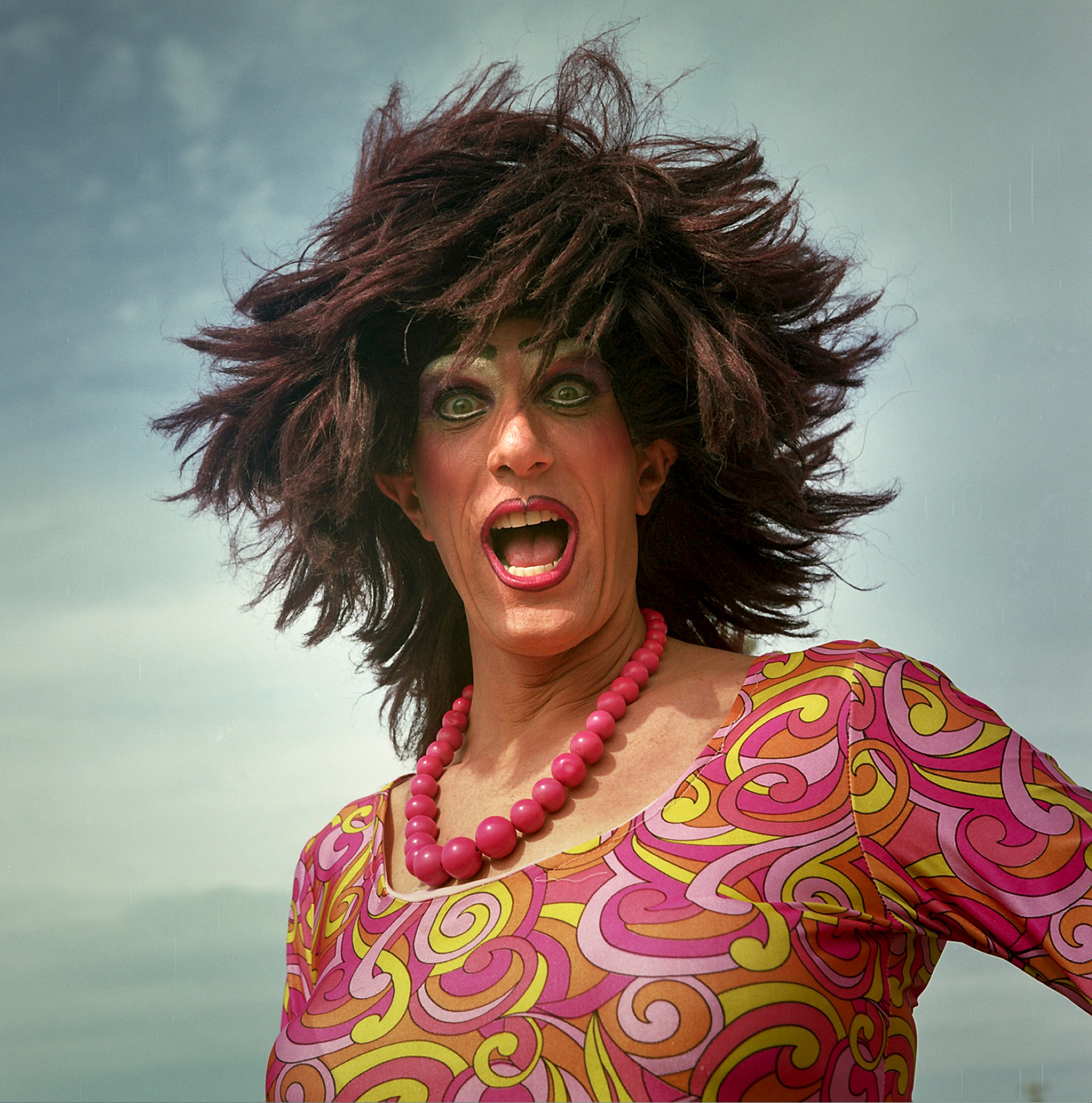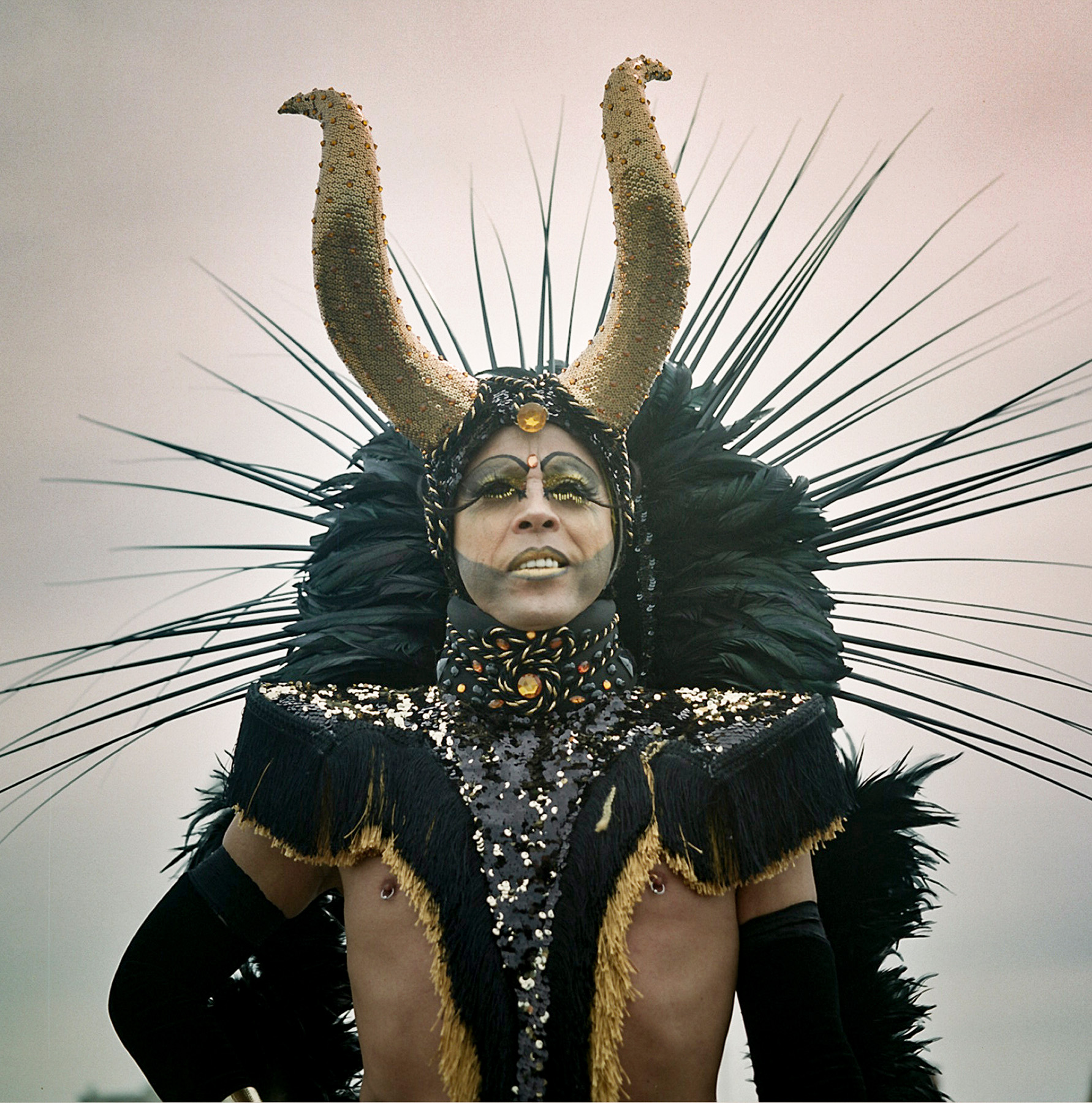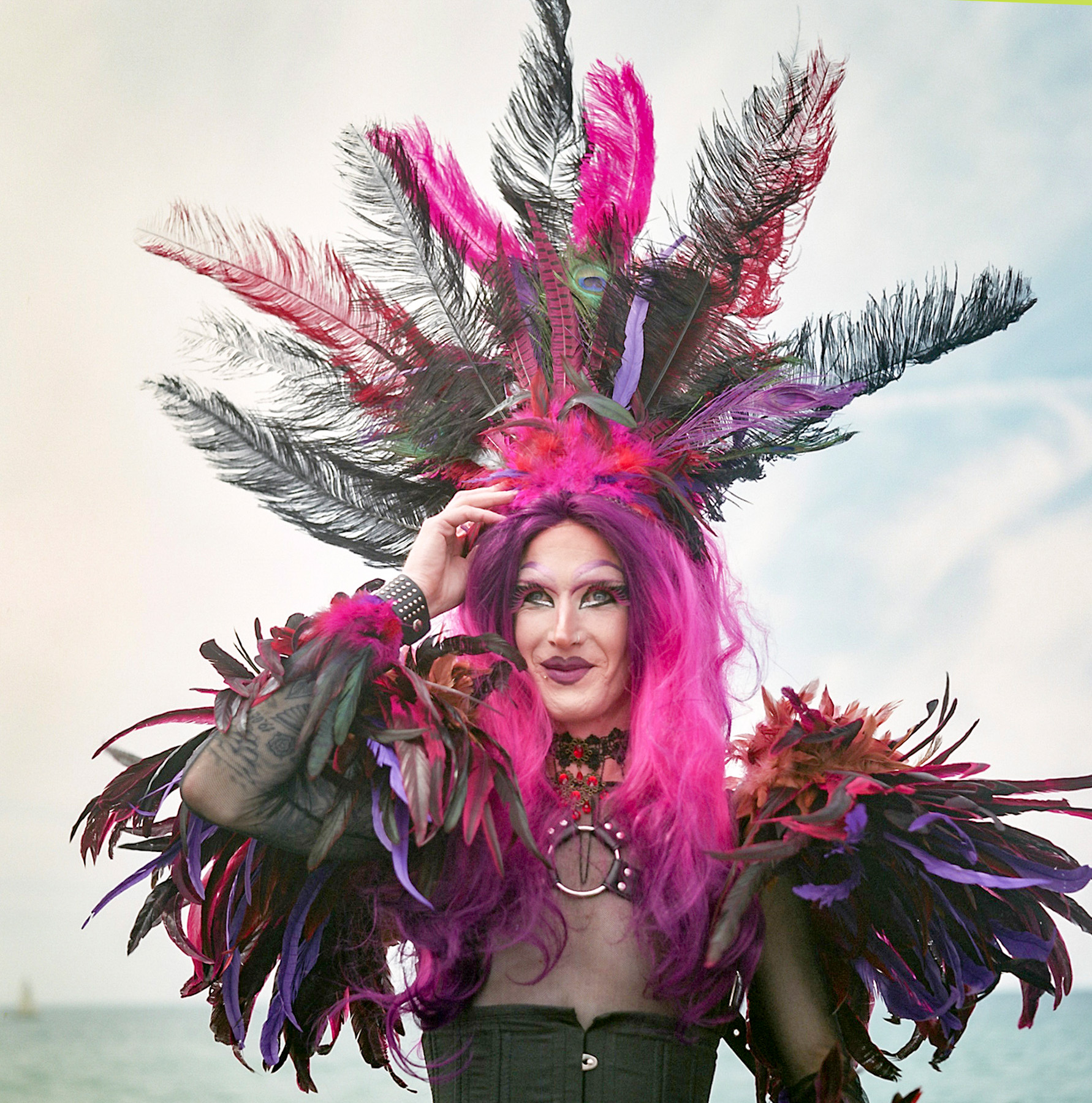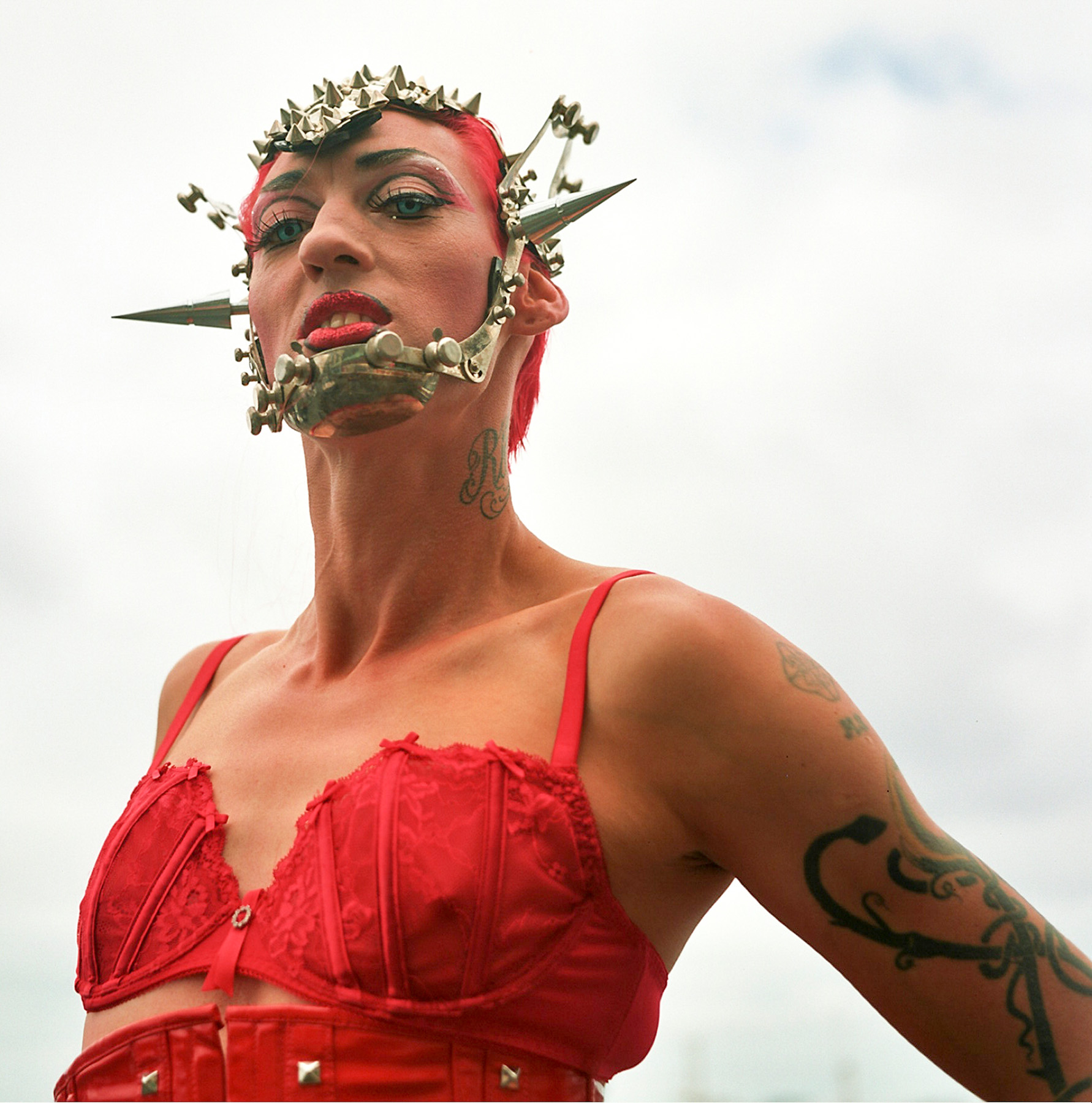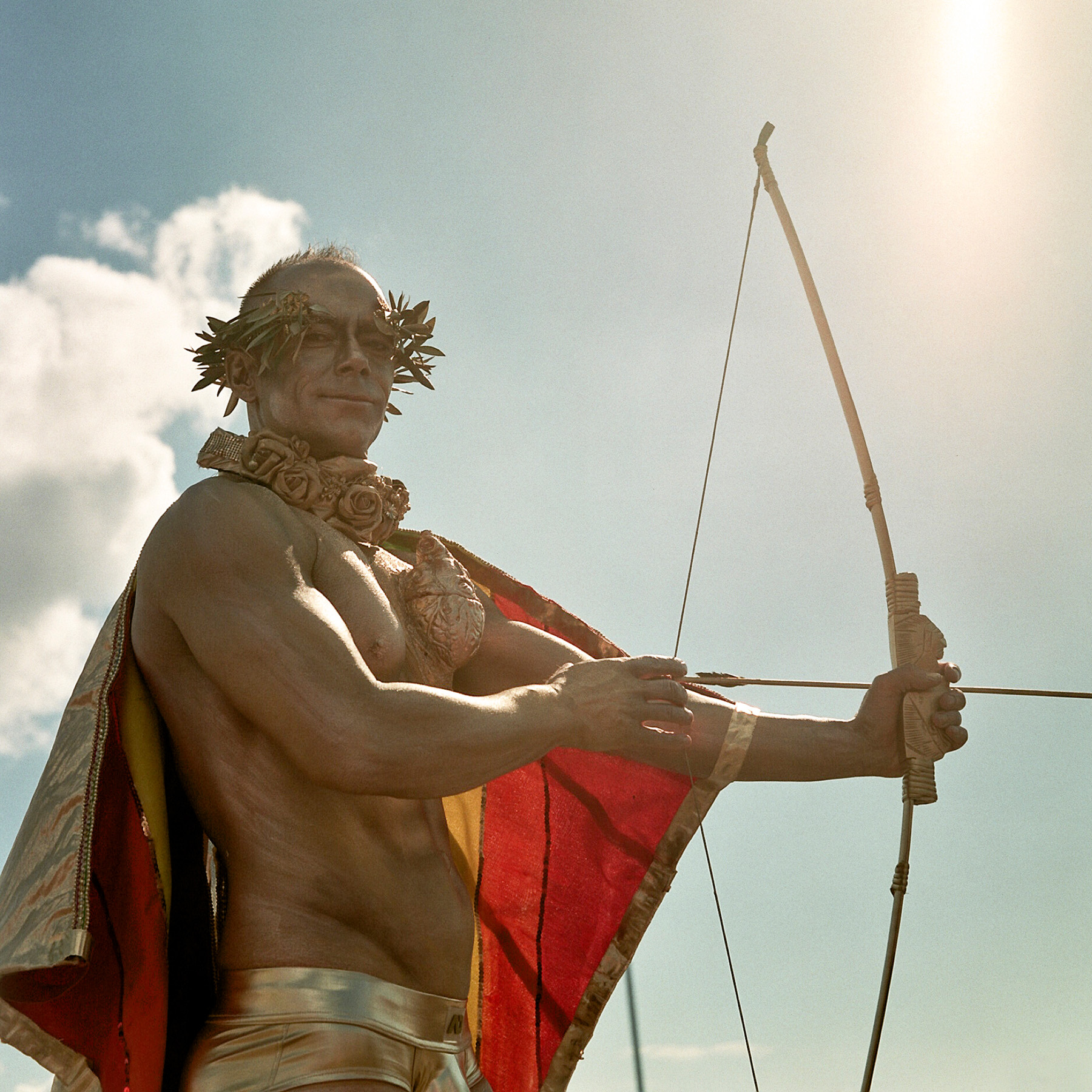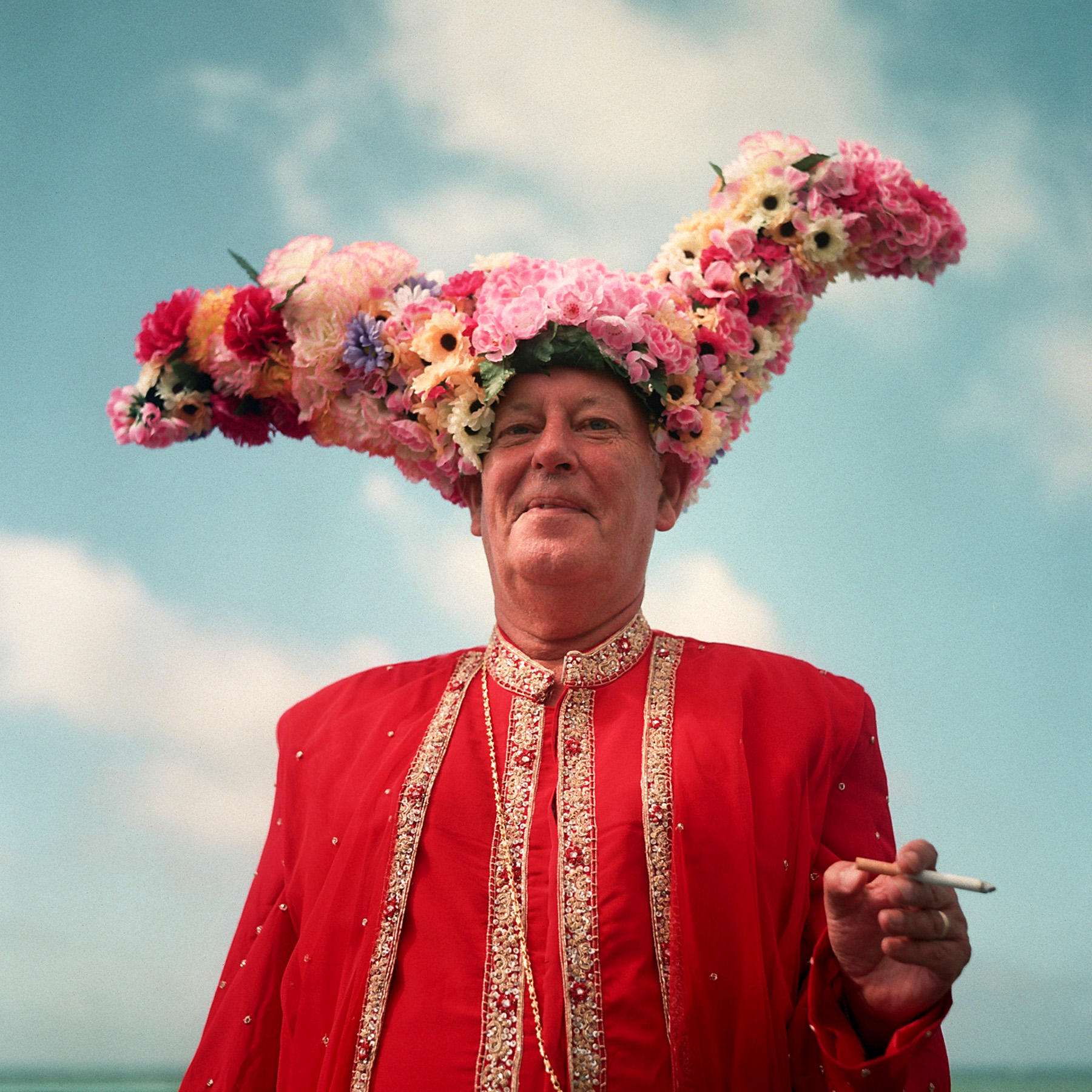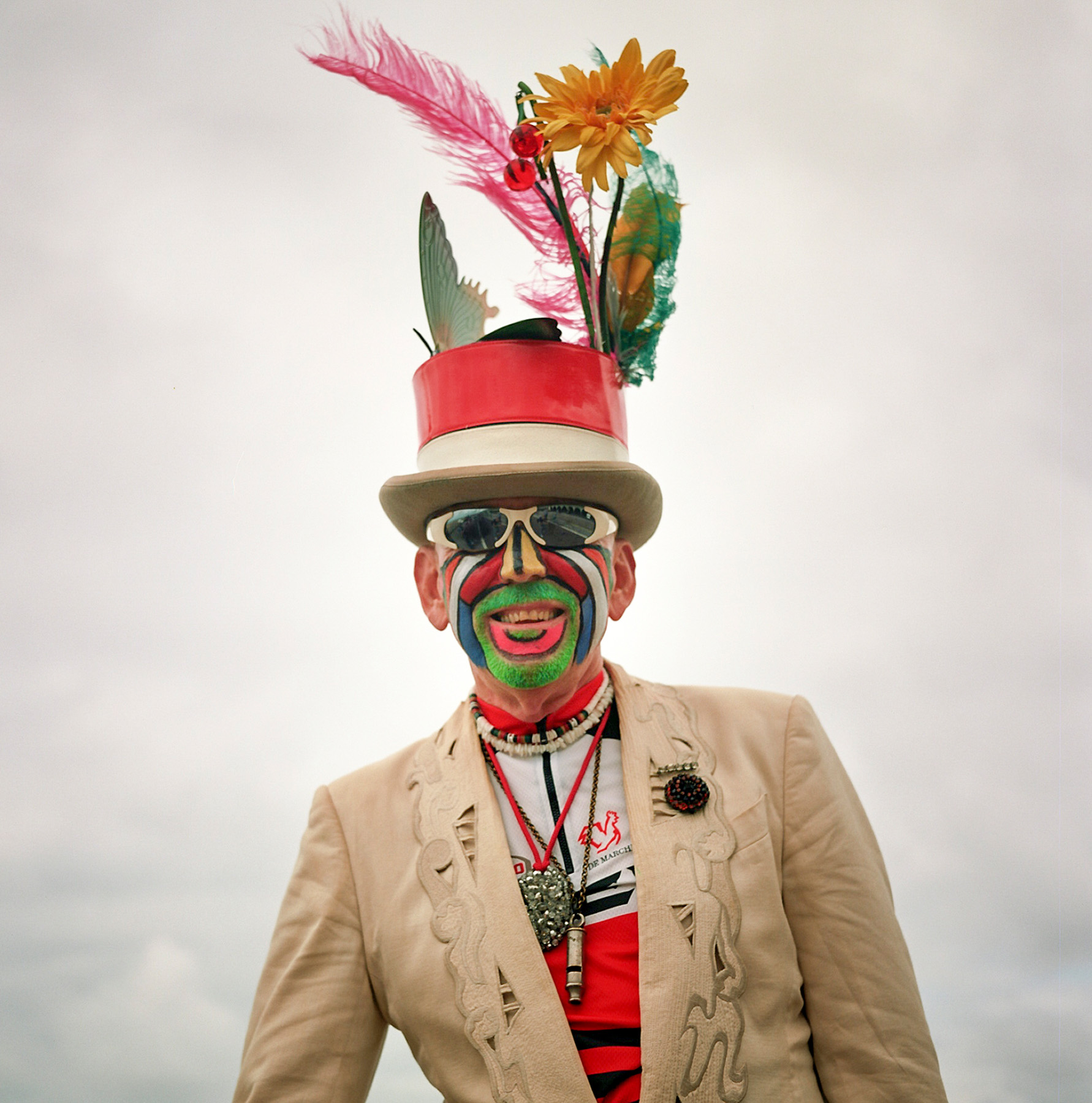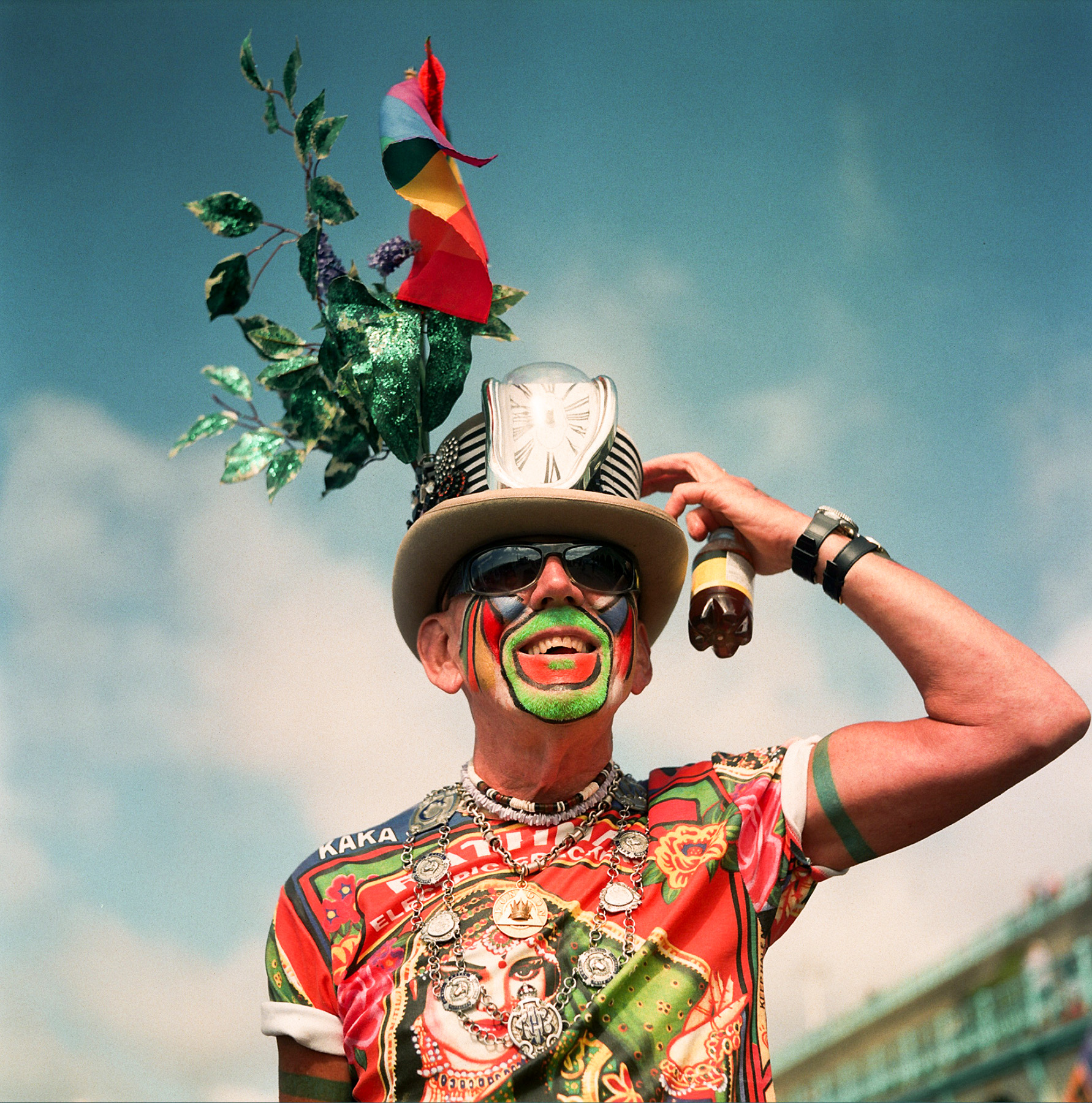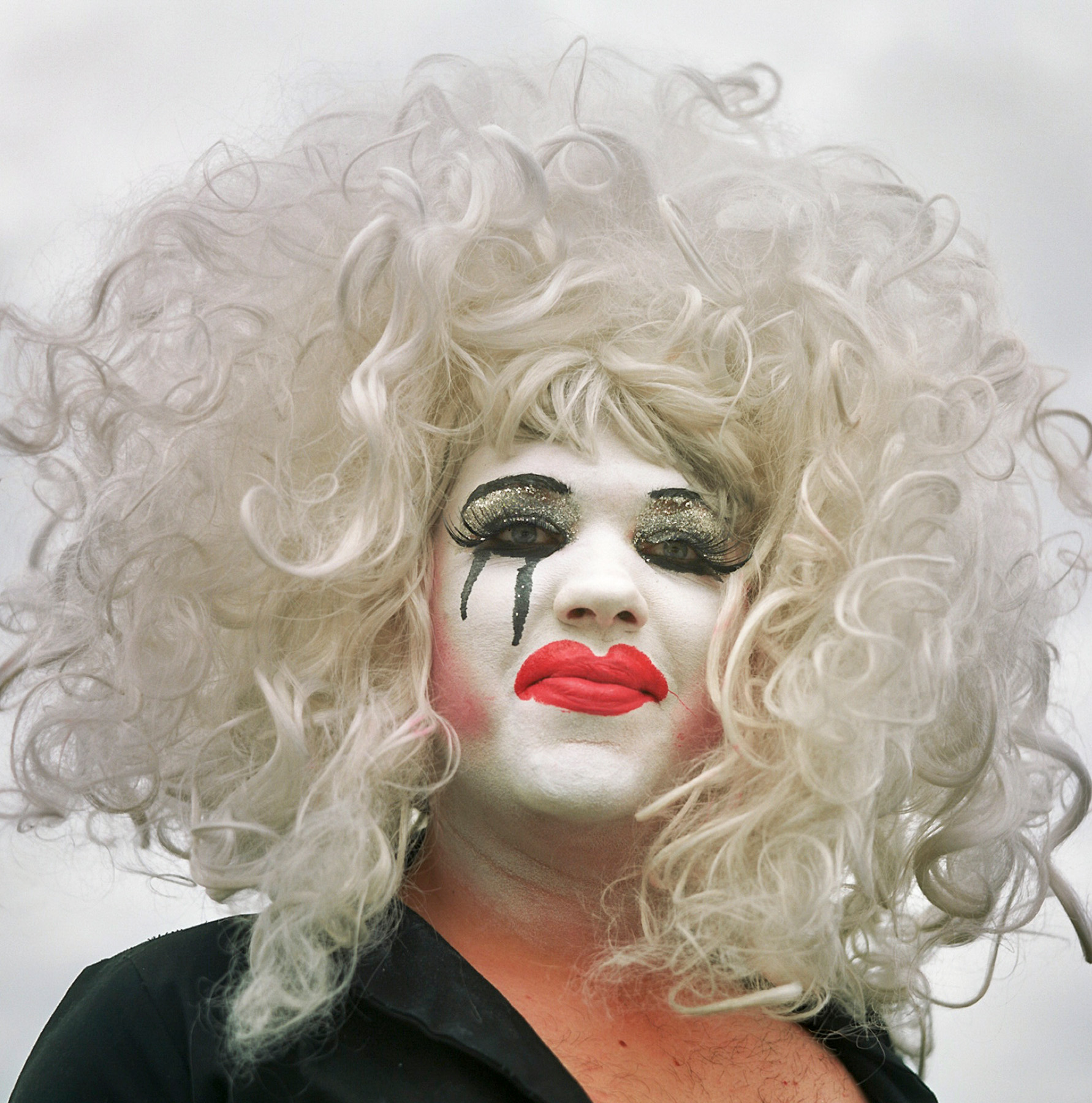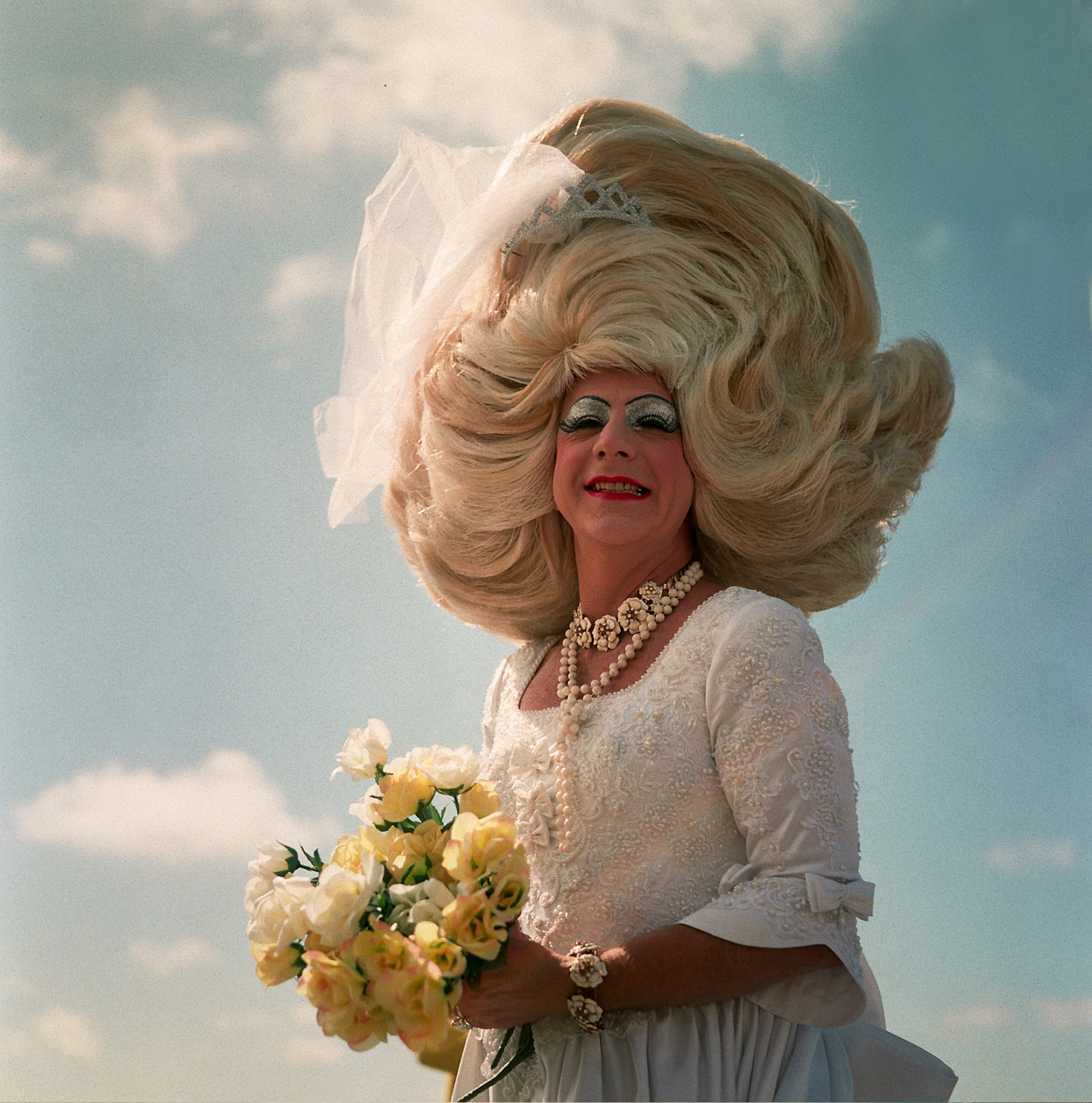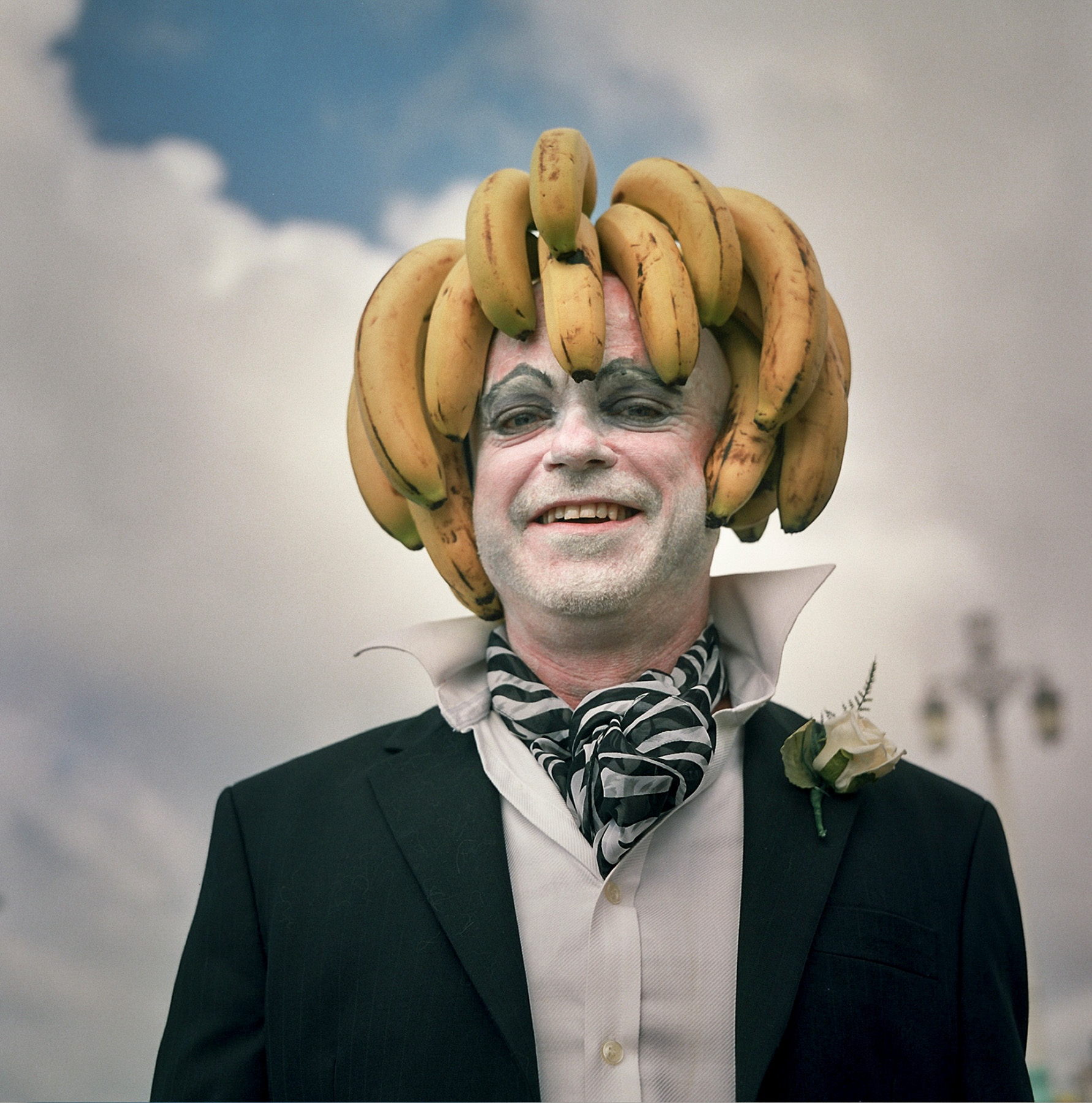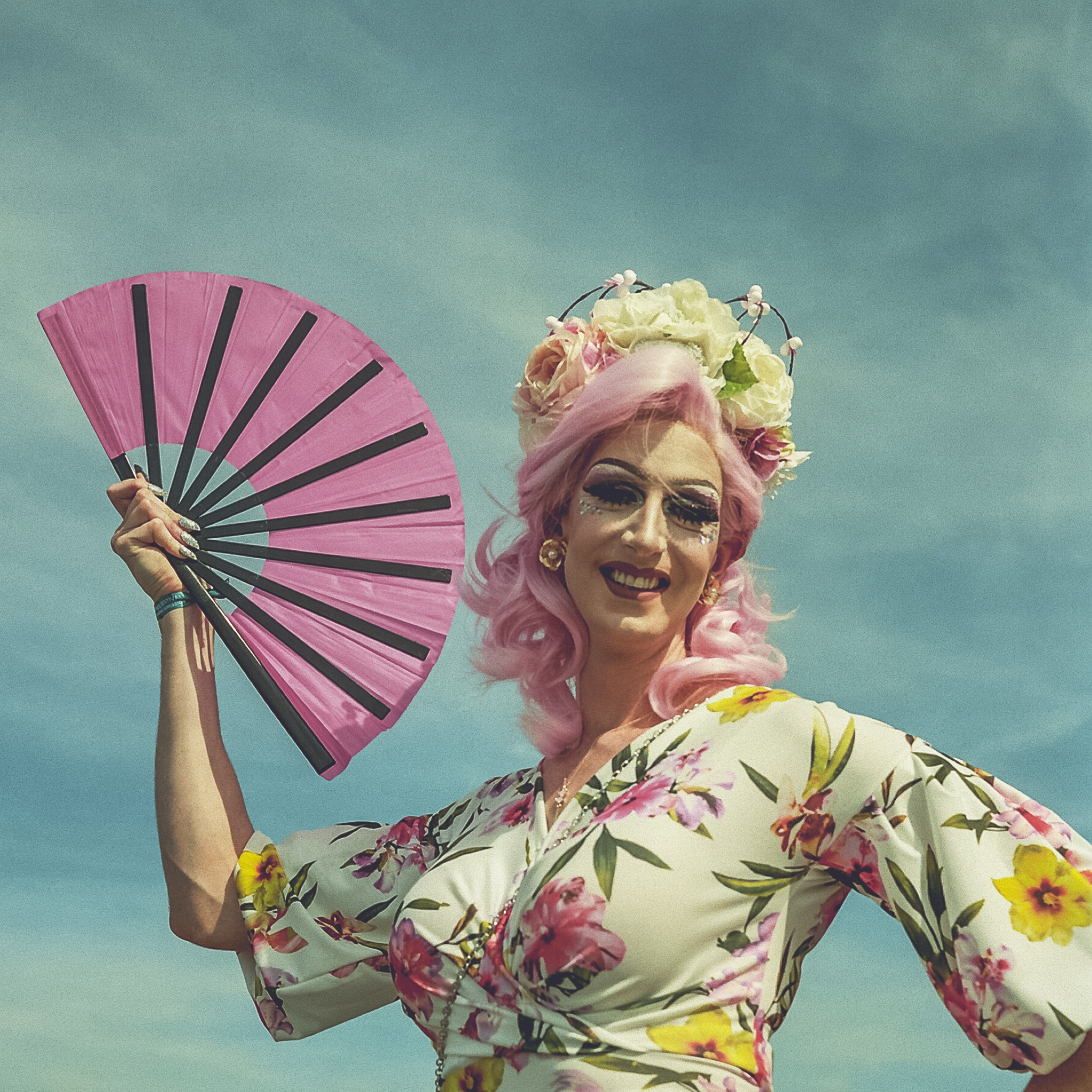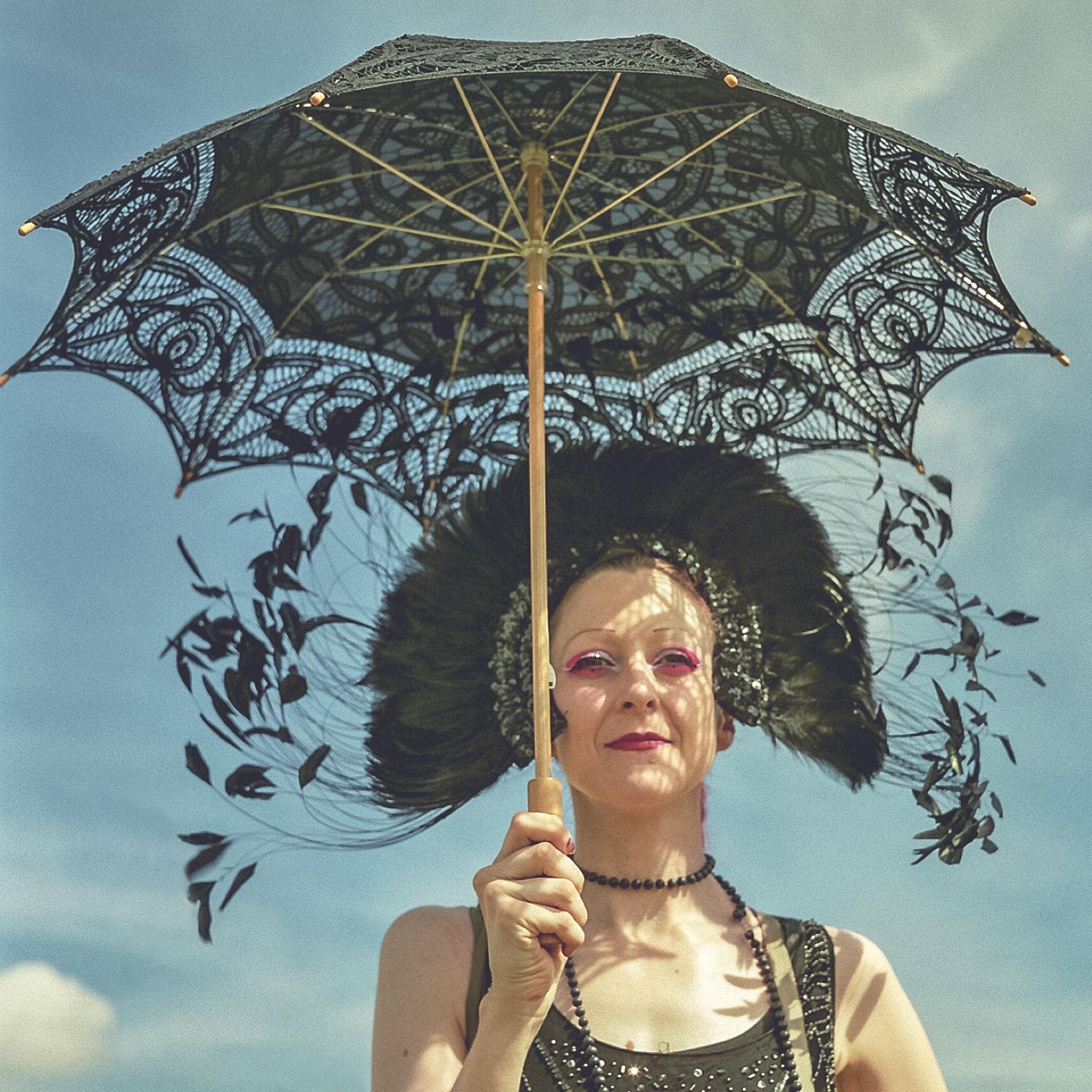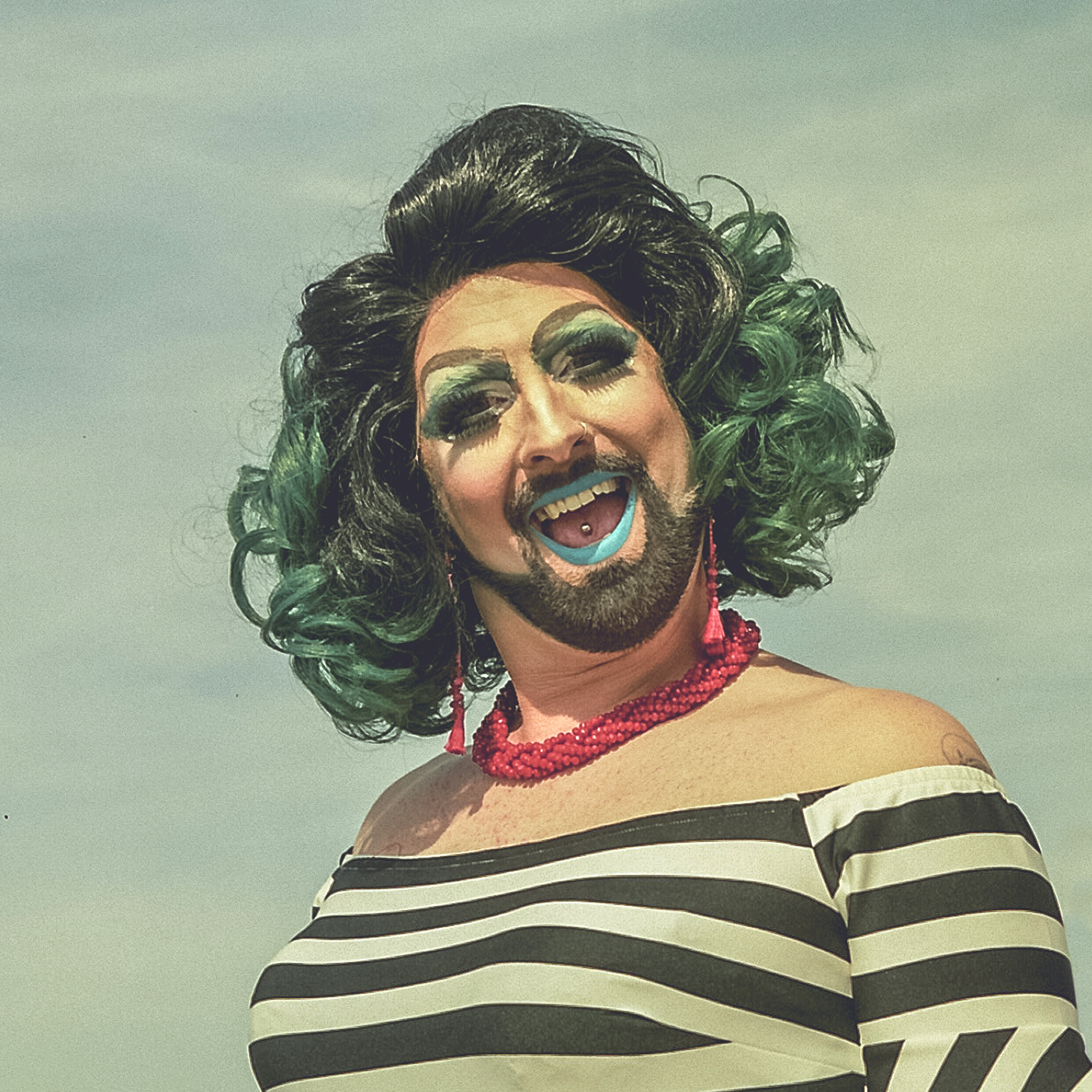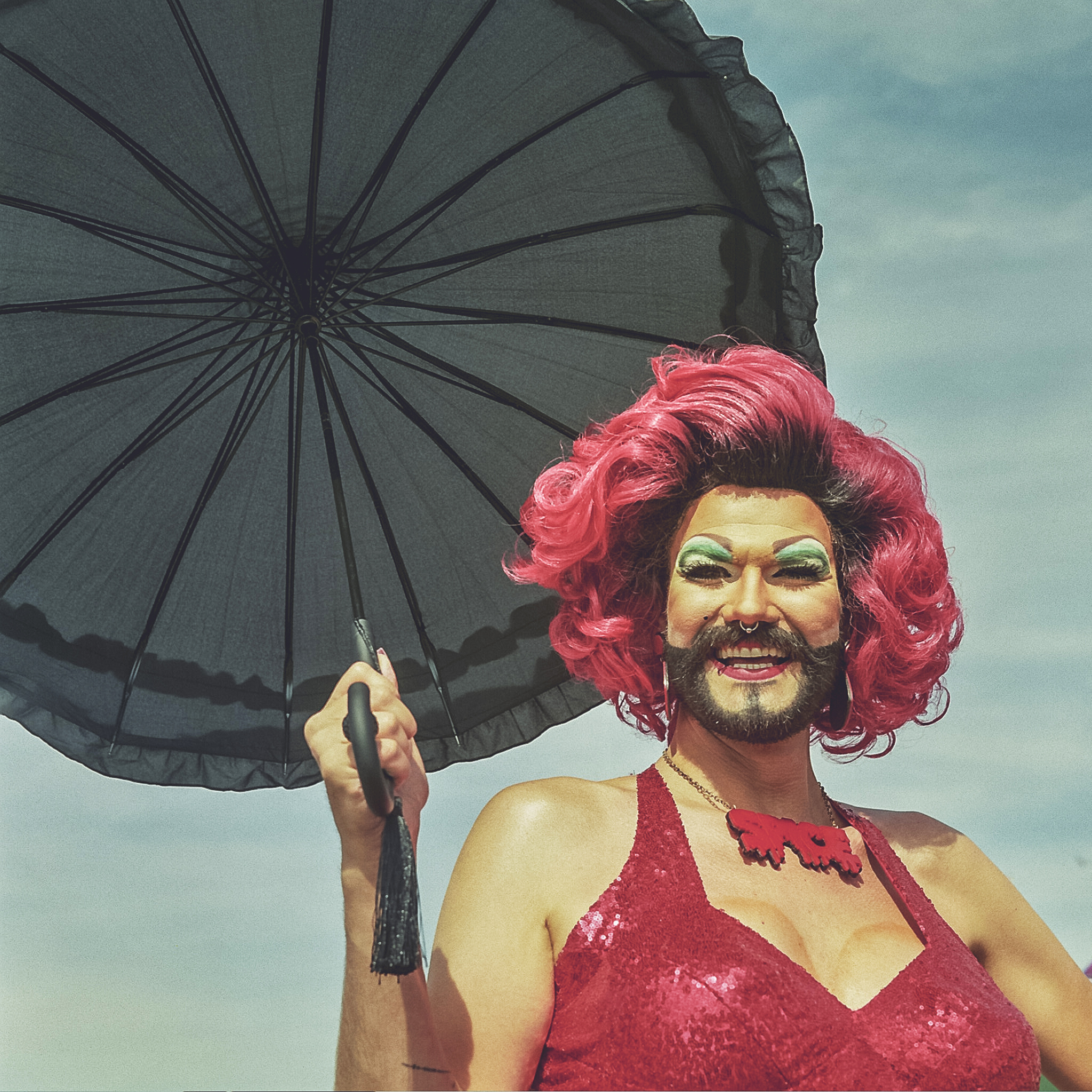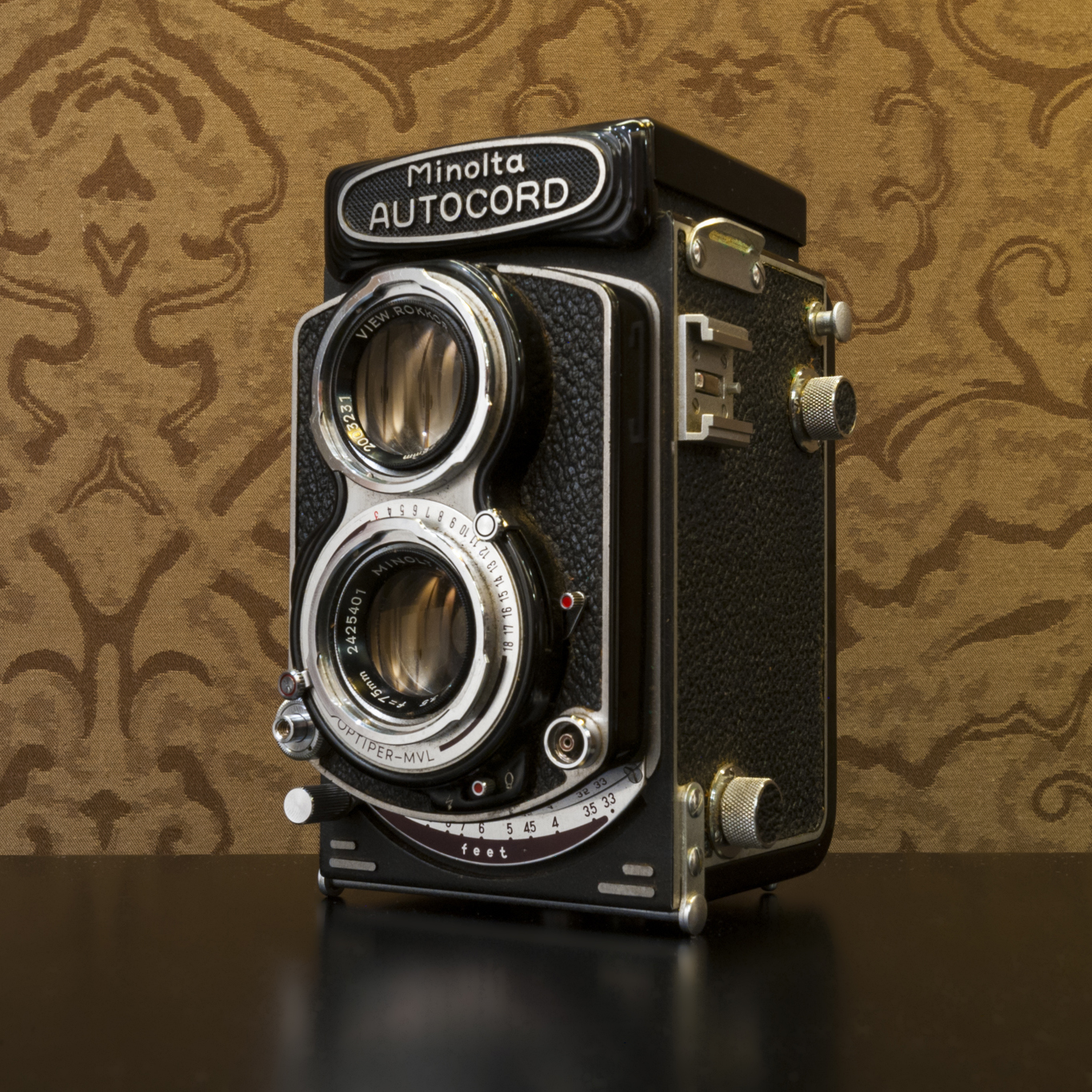As a Brighton photographer, taking photos at Pride each year is an absolute must. What I find the most visually rewarding in this celebration of our city’s diverse community are the drag queens and costumed paraders. Pride is a real fun event and though people go to great lengths to create their costumes, none of them take themselves too seriously. Since 2009 I’ve been shooting individual portraits and through experience I’ve found that the hour before the parade starts when everyone is buzzing with anticipation is perfect for me.
With my background in advertising art direction I’m more comfortable working to a brief so even on my personal photographic projects I like to set myself limitations to work within. Each year I use the same medium format film camera, a fixed lens 1961 Minolta Autocord loaded with the same Fuji portrait film. This has helped give my shots a consistent look across the years. As people are generally trying to get to their start points and organise themselves, I limit myself to I shoot one frame for each subject before moving on
Using an old camera is a great conversation starter, it’s visually unusual compared to the digital SLR’s most people are using. It has two lenses, a viewing lens and a taking lens, and to focus you need to look down into the glass viewfinder. It’s not as fast to use as a digital but people seem to appreciate the extra effort that goes into making the picture. An added advantage of the top mounted viewfinder is that I naturally shoot from lower down. This viewpoint gives my subjects a statuesque appearance and also gives me a greater chance of getting a cleaner frame of clear sky behind them.
Brighton Pride is the UK's biggest and attracts hundreds of thousands of people to the city every year. My individual portraits can only give you the tiniest taste of what a great celebration it is. If you get the chance, do come and join in.

